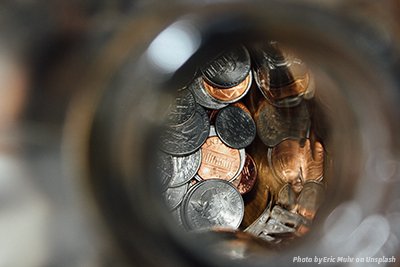
CITIRA and the ASEAN Tax War
By Atty. Benedicta Du-Baladad
 IN early 2016, I wrote of a looming tax war in the Asean Region owing to the integration of the economies of the 10 Asean members under the Asean Economic Community. The AEC officially kicked off in January 2016 and, at that time, there were already noticeable signs of a “race to the bottom” in lowering corporate income taxes (CIT).
IN early 2016, I wrote of a looming tax war in the Asean Region owing to the integration of the economies of the 10 Asean members under the Asean Economic Community. The AEC officially kicked off in January 2016 and, at that time, there were already noticeable signs of a “race to the bottom” in lowering corporate income taxes (CIT).
The first movers were Malaysia and Vietnam, which immediately reduced CIT on the same day the AEC kicked off. Malaysia reduced its CIT from 25 percent to 24 percent, and Vietnam from 22 percent to 20 percent, making it on a par with Thailand’s CIT of 20 percent. Likewise, all these countries (Malaysia, Vietnam and Thailand) also lowered the rate of CIT for small-and-medium sized enterprises (SMEs)—from 20 percent to 17 percent in Malaysia, from 20 percent to 0,10, 15 percent in Thailand depending on profitability, and in Vietnam, the lowered CIT rate of 20 percent was applied retroactively two years back to 2014, and a proposal to reduce further to 15 percent.
This is not surprising. This is a normal consequence as member-countries compete in getting a bigger share in that pie called foreign direct investment (FDI) inflows, both from outside the region and intra-region. Similar tax wars had been experienced in the European Union and in less integrated regions such as Africa during the early years of integration.
The tax war is manifested in two ways—a reduction in corporate and personal income taxes, and an offer of attractive fiscal incentives, such as tax holidays, reduced tax rate, accelerated allowances, additional deductions, duty free importations, and etc.
Indonesia, although considered a late mover, is planning to do both—lower the CIT and make incentives more attractive—a more aggressive move. Its plan to reduce CIT from 25 percent to 17.5 percent, making it one of the lowest in the region, has not materialized until now. But, beginning 2018, it expanded the coverage of pioneer industries to cover 18 sectors and offered extended duration of ITH of up to 20 years depending on the amount of investments. This, despite oppositions by think tanks, such as Prakarsa, on its impact to revenue, and the possibility of igniting an already budding harmful tax competition in the region.
A Prakarsa study in 2015 reported that tax holidays do not necessarily attract investment. In the 1970s when tax holiday policy was enacted in Indonesia, there was no significant investment. Instead, when the ITH was revoked in 1984 and there was no special tax incentives policy, FDI increased rapidly.
The same Prakarsa report cites a research from Banga (2003) in 17 Asian countries, including Indonesia, which concluded that tax incentives had no significant impact on the increase of FDI inflows. Another research (Dewi, 2012) also concluded that tax holidays do not significantly influence investment decision. The theory presented in these reports points to the fact that even without tax holiday, Indonesia already has many potential resources to attract investors and these investors will come, with or without incentives.
"Talking about certainty, I noticed that House Bill 4157 introduced another uncertainty by making the programmed 1 percent yearly CIT reduction subject to a condition. The new provision now says that the President can suspend the scheduled reduction if the projected deficit target as a percentage of GDP exceeds the programmed deficit, or on the reverse, could advance the scheduled reduction if otherwise. That makes the CIT reduction conditional."
The Philippines, another laggard, had been taking a more prudent approach, a deliberate move to preserve its revenue and put in place sound fiscal policies that are long term. Like Singapore, it chose not to join the rat race.
It is working on Citira since 2017. Citira proposes to cut CIT rate from 30 percent to 20 percent in a span of 10 years, placing it within the Asean average. But unlike Indonesia, it plans to tighten tax incentives to make it time bound, performance-based, targeted and transparent. Its argument is the same as that of Prakarsa. Despite the very attractive and never-ending incentives and tax holidays, the Philippines has not actually performed well in attracting foreign investments. In fact, it has been a consistent tailender in attracting foreign investments.
Based on the 2018 Asean Investment Report, FDI flows to the Philippines from 2010 to 2017 only amounted to $39.5 billion, or only 4.17 percent of the total FDI flows in Asean. Indonesia, on the other hand, got a total of $135.9 billion or 14.36 percent of the total FDI in the region. This supports the theory that incentives do not play a big role in investment decisions.
A United Nations Conference on Trade and Development (Unctad) study on the impact of tax incentives to FDI (2000), reported that the role of incentives in promoting FDI has been the subject of many studies, but their relative advantages and disadvantages have never been clearly established. There have been spectacular successes, as well as failures in their role as facilitators of FDI. The Philippines could be one of those failures.
As a factor in attracting FDI, incentives are only secondary to more fundamental determinants, such as internal market size, access to raw materials, availability of skilled labor, consistency of government policies, infrastructure, and etc., which are on the first line of considerations for screening on where to invest. Tax rates and fiscal incentives only come second, which are considered only after passing the first screening, says the Unctad report.
Considering these studies, the fear that investors would fly out or stay away from the country if Citira is passed may be unfounded, if the more important fundamental determinants are addressed.
What is more worrisome is our inability to decide quickly and firmly on the passage of Citira. That is the real concern. Investors who may have put on hold new investments or expansion projects meant for the country may not wait any longer and may shift their sights to other Asean neighbors. Businessmen want certainty more than incentives, and that certainty can only be made certain once the Citira is passed into law.
Talking about certainty, I noticed that House Bill 4157 introduced another uncertainty by making the programmed 1 percent yearly CIT reduction subject to a condition. The new provision now says that the President can suspend the scheduled reduction if the projected deficit target as a percentage of GDP exceeds the programmed deficit, or on the reverse, could advance the scheduled reduction if otherwise. That makes the CIT reduction conditional.
This is a real uncertainty, and a SERIOUS concern!
The author is the Founding Partner, Chair and CEO of Du-Baladad and Associates Law Offices (BDB Law), a member-firm of WTS Global.
The article is for general information only and is not intended, nor should be construed as a substitute for tax, legal or financial advice on any specific matter. Applicability of this article to any actual or particular tax or legal issue should be supported therefore by a professional study or advice. If you have any comments or questions concerning the article, you may e-mail the author at This email address is being protected from spambots. You need JavaScript enabled to view it. or call 403-2001 local 300.




